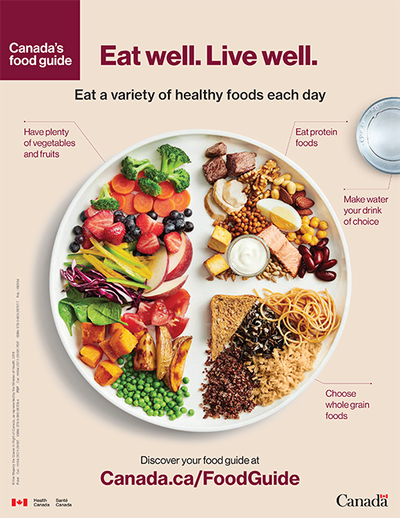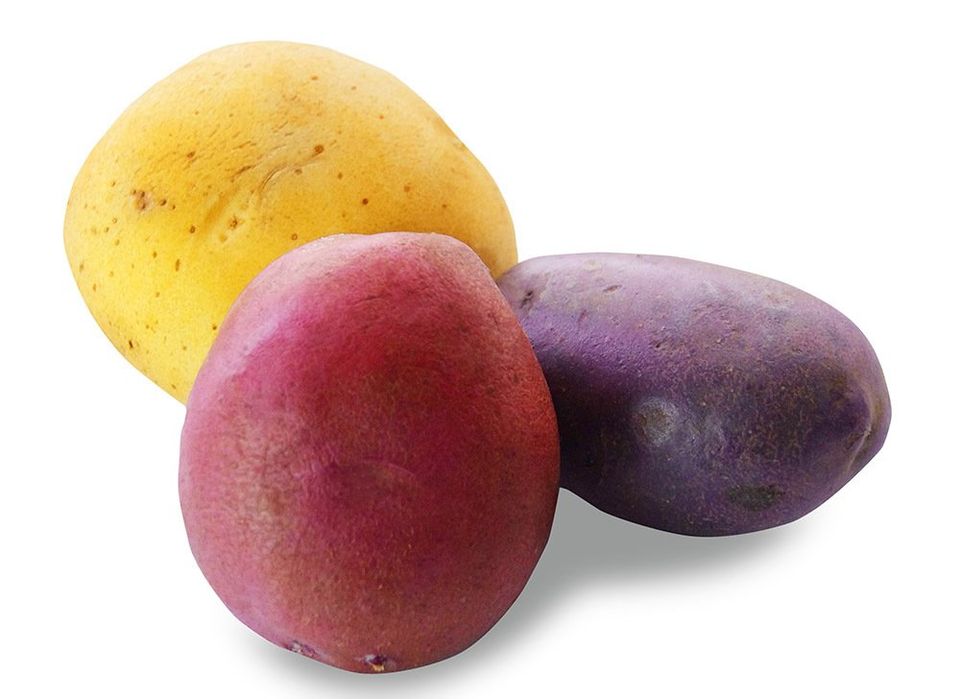Health Benefits of Potatoes
Potatoes - The Healthy Option
- Potatoes are a powerful healthy component of balanced diet.
- Potatoes contain (medium size potato): • 45% recommended daily intake of Vitamin C • 18% of your recommended daily fibre intake;
- Potatoes served with the skin on (new potatoes, baked potatoes) can contain up to 4 grams of dietary fibre per serving, making them one of the best fibre options in the produce aisle. A medium sized potato without the skin still contains 2 grams of dietary fibre. • No saturated or trans fats • More potassium per serving than broccoli or bananas; 18% of your daily recommended intake
- No fat, no cholesterol, no sodium, and only 100 calories per serving.
- Gluten free.
- Potatoes are a healthy, nutrition rich choice that contain a variety of essential vitamins and minerals.
- Per dollar, potatoes are an affordable option for meeting key dietary guidelines for good health!
Nutritional Facts About Potatoes
- Potatoes have high quantities of resistant starch, which is good for colon health due to pre-biotic properties.
- Potatoes have significant amounts of valuable micro-nutrients such as Iron, Niacin, Folate, Thiamin, and Zinc.
- Potatoes are naturally fat-free and sodium-free.
- Potatoes are gluten-free, making them an important source of carbohydrates for those with Celiac Disease or gluten-sensitivities.
Nutritional Advantages of Coloured Varieties of Potatoes
Potato is one of the most important sources of antioxidants in the human diet. As such, it supports the antioxidant defense network in our bodies that reduces cellular and tissue toxicities that result from free radical-induced protein, lipid, carbohydrate, and DNA damage. In this way, potato antioxidants may reduce the risk for cancers, cardiovascular diseases, diabetes, and even radiation damage.
Phytochemicals in coloured vegetables are responsible not only for the colour, but also for nutritional quality.
The purple/blue fleshed tubers demonstrate the highest antioxidant activities, indicating that anthocyanins are important antioxidants. Some research suggests that purple/red potato cultivars have a greater potential as functional foods for enhanced human health benefits.
Potatoes are known to naturally contain antioxidant chemicals, phenolics, including the pigments that give them their colour: flavonoids (mostly yellow), carotenoids (yellow and orange), and anthocyanins (red/purple/ blue). Research has shown that eating antioxidants can counteract the aging process and may help prevent coronary heart disease.
Potato varieties with purple or red flesh and skin had significantly higher antioxidant activity than varieties with white or yellow flesh, mostly due to the presence of plant pigments called anthocyanins.
The total amounts of phenolics and anthocyanins differed among the eleven potato varieties, with the red/purple skin and flesh varieties generally having the highest.
The more pigmented varieties also had higher rates of antioxidant activity. The researchers also found that the antioxidant activity was closely related to the amount of phenolics and anthocyanins. Anthocyanin is responsible for both color and powerful health protection potential.
Potatoes contain a number of health promoting phytonutrients.
- Phenolics, flavanoids, folates, kukoamines and carotenoids are important phytonutrients.
- Pigmented potatoes have high concentration of phenolic acids as compared to white fleshed potatoes. Pigmented potatoes are rich in natural colourants and antioxidants.
- Pigmented potatoes can be used for developing functional food/nutraceuticals.
Moreover, potatoes have a host of phytochemicals, natural compounds linked to a variety of health benefits (keep the skin on for the biggest boons). Make sure to get a variety of potatoes in your diet. Purple potatoes are chock-full of anthocyanins and chlorogenic acid (which may actually lower the glycemic index of potatoes), whereas yellow-fleshed potatoes have the most folate.
How Antioxidants Work
They help our bodies protect against age-related health risks. Every day, our cells wage a battle against free radicals – unstable oxygen molecules that are a normal byproduct of metabolism. When you aren’t getting enough antioxidants in your diet, free radicals can build up in your body, causing oxidative stress, which is associated with cancer, heart disease, diabetes and other diseases of aging.
The Anti-Aging Power of Blue
Dietary antioxidants such as anthocyanins, flavonoids found in the blue pigments of Wild Blueberries and blue potatoes, have the ability to neutralize free radicals and help prevent cell damage. Antioxidants also protect against inflammation, thought to be a leading factor in brain aging, Alzheimer’s disease and other degenerative diseases.
Phenolics are phytochemical compounds in plants that protect them from the insults of nature while assisting with essential functions of reproduction and healthy growth. They contribute to the colour of the produce and possess antioxidant and anti-inflammatory properties that when consumed are believed to provide us with potential health benefits associated with reduced risk of many chronic diseases. Phenolics are perhaps the most studied class of phytochemical compounds and more and more evidence is constantly emerging that suggests the health benefits of fruits and vegetables are attributed to the additive and synergistic interactions of these bioactive compounds.





